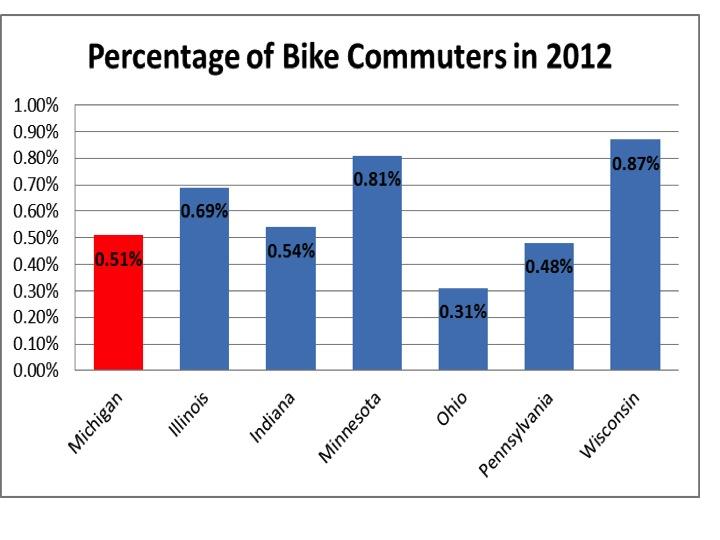If it seems like there are more bicyclists on the streets these days, it’s because there are. Data from the 2012 American Community Survey, compiled by the League of American Bicyclists in their 2014 annual report, indicates Detroit had the fastest-growing community of bike commuters among 70 of the largest American cities. With a 464.4 percent growth in bicycle commuting since 1990, Detroit tops the list of growth ahead of more well-known cycling locales as Portland, OR which had 430.3 percent growth and San Francisco, which had 292.2 percent growth. It appears through events like Tour de Troit and Bike the Bridge along with policies such as Complete Streets, Detroit is becoming a Midwestern bike Mecca. It only seems plausible this notion can become true with the light traffic, urban roads and flat terrain within Detroit city limits. However, this chart-topping growth has pulled Detroit to merely 44th out of 70 large cities for bike commuting. When further looking into the data, it shows that while Detroit may be the fastest growing in the region and nation, it has challengers on its back wheel.
Detroit has experienced the largest increase in bike commuting since 1990, according to the American Community Survey 5-year estimates (2007-2012). Cycling to work has nearly quintupled in the 12-year span. The average growth in cycling among Great Lakes cities is high, with a mean growth of 251.9 percent. The Highest growth was in in Detroit, Chicago, Cleveland and Buffalo.
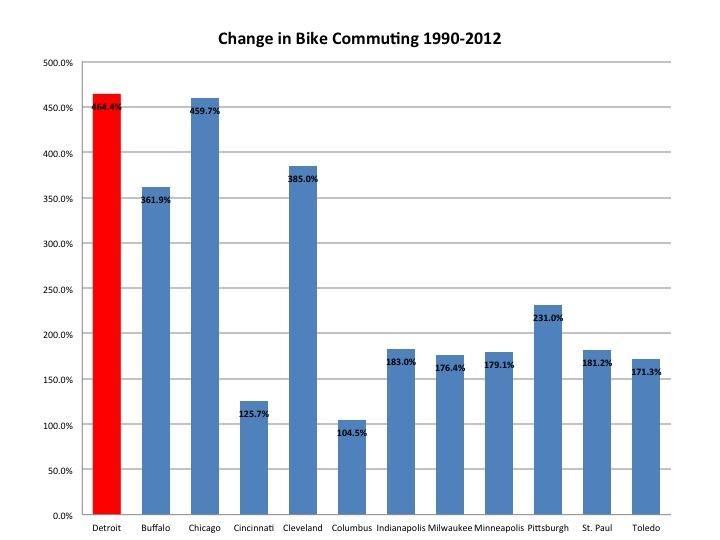
An examination into a subset of those years, 2005-2012, indicates that Detroit has experienced leading growth among Great Lakes peers for the shorter period as well. Although Buffalo is close behind with 269.6 percent growth, Detroit’s recent 272.3 percent expansion in bike commuting indicates a more healthy growth than the region’s 171.2 percent growth in the urban areas, according to the 2012 American Community Survey 5-year estimates.
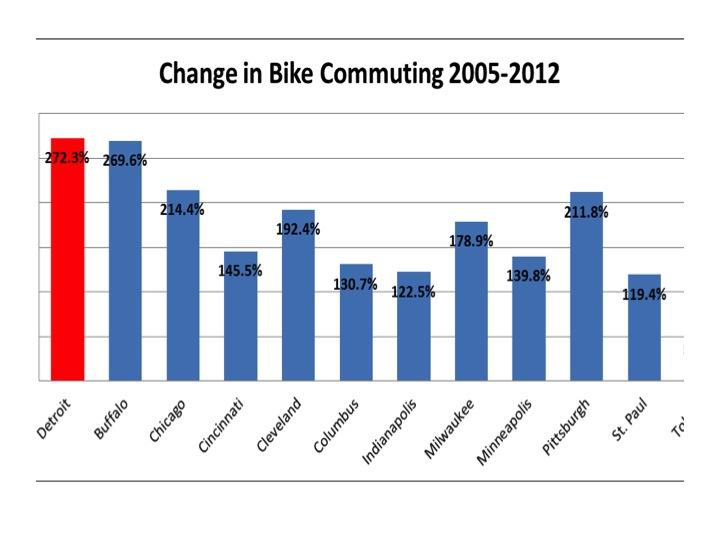
An examination into a subset of those years, 2005-2012, indicates that Detroit has experienced leading growth among Great Lakes peers for the shorter period as well. Although Buffalo is close behind with 269.6 percent growth, Detroit’s recent 272.3 percent expansion in bike commuting indicates a more healthy growth than the region’s 171.2 percent growth in the urban areas, according to the 2012 American Community Survey 5-year estimates.
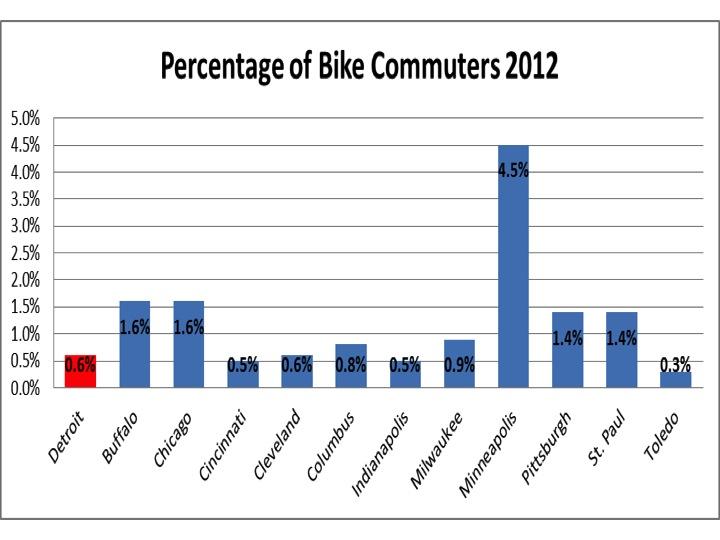
The rest of the state, has not had the same dominant growth pattern. At the state level, while there is still persistent and healthy growth in the number of bike commuters, Michigan falls in line with its peers. Second in growth at 81.7 percent, it falls behind Pennsylvania (84.1) and barely edges Illinois (81.6). The largest rate of growth in the country was in Maryland at 112.8 percent, the average growth was 45.0 percent and just five states saw a decrease in bike commuting since 2005 (Arkansa, Oklahoma, North Dakota, Iowa and Montana).
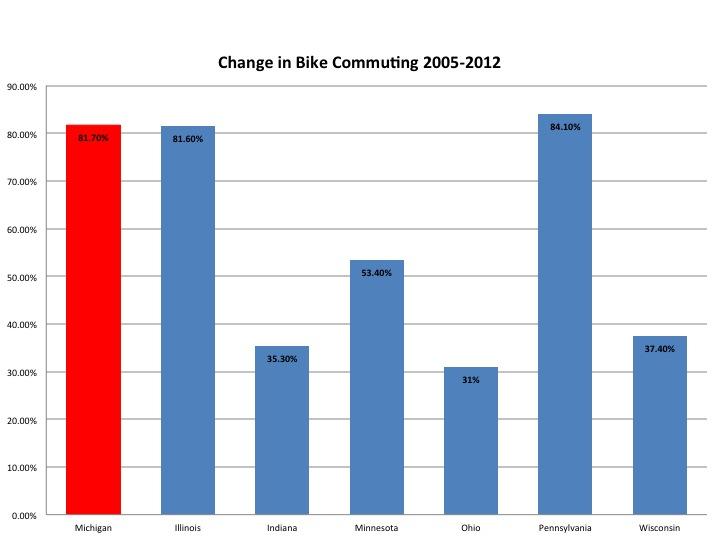
Despite growth, Michigan lags behind the national average with a 0.51 percent rate of bike commuting, leaving it fifth in the region, ahead of just Ohio and Pennsylvania, according to the 2012 American Community Survey. It also places Michigan at 24th of 50 states.
